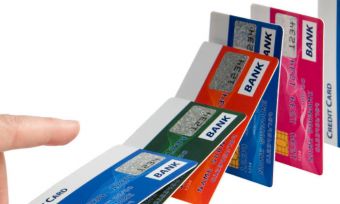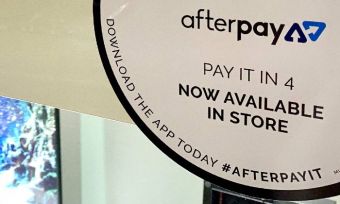National Australia Bank has launched a new credit card, which it says offers strong features and fairer pricing than buy now, pay later services. Our experts dive in to see how it stacks up.
NAB launched its StraightUp card on Wednesday, describing it as a “no interest credit card” that could give Australians “more control over their finances.” It’s open for applications from today.
The card has no interest, no annual fees and no late payment fees, but it’s not entirely free of charges. NAB says customers will be charged a monthly fee, but only when they have a balance owing or use the card during the month. If the card remains unused the monthly fee will automatically be reversed.
According to NAB, total minimum repayments will vary depending on the customer’s credit limit, as follows:
- $1,000 credit limit: Pay a minimum of $35 per month towards your balance (a $10 monthly fee is included in your
balance) - $2,000 credit limit: Pay a minimum of $75 per month towards your balance (a $15 monthly fee is included in your
balance) - $3,000 credit limit: Pay a minimum of $110 per month towards your balance (a $20 monthly fee is included in your
balance)
NAB did stress that these were minimum figures, and encouraged customers “to pay as much as they can each month.”
In theory, the card could be left for emergencies inside your bedside drawer where it would attract no fees until you used it – similar to some buy now, pay later (BNPL) services – although as with most other credit cards, a customer’s credit limit would likely be recorded on their credit report.
NAB said the StraightUp card had a continuing line of credit (meaning you could access extra money at any time up to your credit limit), was available to use anywhere Visa is accepted and allowed customers to repay balances over a longer period of time than some BNPL players.
The bank also said the card had lower credit limits than most credit cards and higher minimum repayments, while cash advances and gambling transactions were banned.
Canstar money expert Effie Zahos said the StraightUp credit card offered some potentially helpful safeguards, including that in the worst-case scenario you’d be able to pay off a debt within three years if you made no further purchases on the card, but warned it was important to watch the fees.
“If you don’t spend on this card, then it’s great,” Ms Zahos said.
“If you use it then you need to factor in how much you think you’d spend and just apply for the suitable credit limit, because if you go with the $3,000 limit and you only spend a small amount, the monthly fee of $20 represents a big chunk.
“Sometimes it’s hard to compare a card that charges no interest rate but has a monthly fee with a card that charges an interest rate but no monthly fee. That’s where the effective interest rate can come in handy.”
Canstar’s research analysts crunched the numbers to see how the 15% of credit cards on Canstar’s database with no annual fee compare to NAB’s new card.
You can see the calculations in the table below, including the ‘effective rate’ calculated for the NAB credit card, which takes into account the monthly fee charged and the credit card balance.
They found a credit card balance of $1,000 paid off over 12 months would be $34 more expensive on the StraightUp card where a $10 monthly fee applies than it would be on the average $0 annual fee credit card, which has an average interest rate of 15.45% compared to NAB’s effective interest rate of 21.46%. The calculations show the NAB credit card becomes more cost-effective than the average $0 annual fee card on a $3,000 balance, being $17 cheaper.
| Credit Card Balance Paid off Over 12 Months | ||||||
| No interest with monthly fee compared to Interest with no fee | ||||||
| Credit Card Balance | Monthly Fee | Total Paid in Fees | Effective Rate^ | Compared to Interest on a $0 Annual Fee Card with a 15.45% Rate | Difference | |
| $1,000 | $10 | $120 | 21.46% | $86 | $34 | |
| $2,000 | $15 | $180 | 16.22% | $171 | $9 | |
| $3,000 | $20 | $240 | 14.45% | $257 | -$17 | |
| Source: www.canstar.com.au – 9/09/2020. Based on personal, unsecured credit cards on Canstar’s database. Calculations based on equal monthly repayments considering monthly fees or interest charges as specified. ^Effective rate based on specified monthly fee and an opening balance of $1,000, $2,000 and $3,000 at the start of the 12 months. | ||||||
How does NAB’s StraightUp compare to CommBank’s Neo card?
Soon after NAB’s launch of its new card, the Commonwealth Bank (CBA) announced it would also release a new 0% interest card out in “late 2020”. Called the CommBank Neo, it would also have three credit balance limits of $1,000, $2,000 and $3,000, with different monthly fees for each limit, CBA said.
Among the differences between the CBA and NAB cards is the fee schedule, with many other features being fairly similar across the two products, as the table below shows:
|
CommBank Neo vs NAB StraightUp: A Comparison |
|||||||
| Credit Limit / Monthly Fee | |||||||
| $1,000 | $2,000 | $3,000 | Provider | Interest * | Annual fees** | Late Payment Fee | |
| CommBank Neo | $12 | $18 | $22 | MasterCard | 0% | $0 | $0 |
| NAB StraightUp | $10 | $15 | $20 | Visa | 0% | $0 | $0 |
| Source: CBA, NAB – 11/09/20. *Interest on outstanding purchases. **In addition to monthly fees on outstanding balances. | |||||||
Credit card use declining while buy now, pay later is on the up
The launch of this new card from NAB comes just days after Reserve Bank of Australia (RBA) data highlighted the recent trend of declining credit card use in Australia.
The RBA data, released on Monday, showed Australians knocked a further $750 million off credit card debt incurring interest in July, with the total now sitting at $22.48 billion.
The reduction in July brings the total decline in balances accruing interest over the past four months to $5.7 billion, compared with a $2.3 billion reduction for the preceding eight months (August 2019 to March 2020).
Other reports have suggested much of Australians’ superannuation early release money has been used to help clear that credit card debt.
The data also showed the number of transactions on credit cards fell from around 258 million in February (before the COVID-19 crisis had taken hold in Australia) to 238 million in July, and the value of transactions fell from $28.7 billion in February down to $24.2 billion in July.
There were 130,524 fewer credit card accounts in July than the month prior and 1.75 million less than in July 2019, showing some people have been ditching their credit cards altogether.
The decline in credit card usage has aligned with a buy now, pay later industry boom which has eaten into credit cards’ market share.
Leading BNPL provider Afterpay recently reported its best-ever quarter as the COVID-19 pandemic gave rise to a period of lockdown and panic buying, with around $2 billion coming into its coffers from Australian shoppers alone between April and June.
A key competitor to NAB and Australia’s largest bank, the Commonwealth Bank, ventured into the buy now pay later market earlier this year when it partnered with Swedish provider Klarna.
American Express also launched a feature this year in Australia that allows some cardholders to pay off a portion of their credit card balance in equal monthly installments with no interest and a fixed monthly fee.
→ Looking to find a better deal? Compare car insurance, car loans, health insurance, credit cards, life insurance, as well as home loans, with Canstar.







Share this article